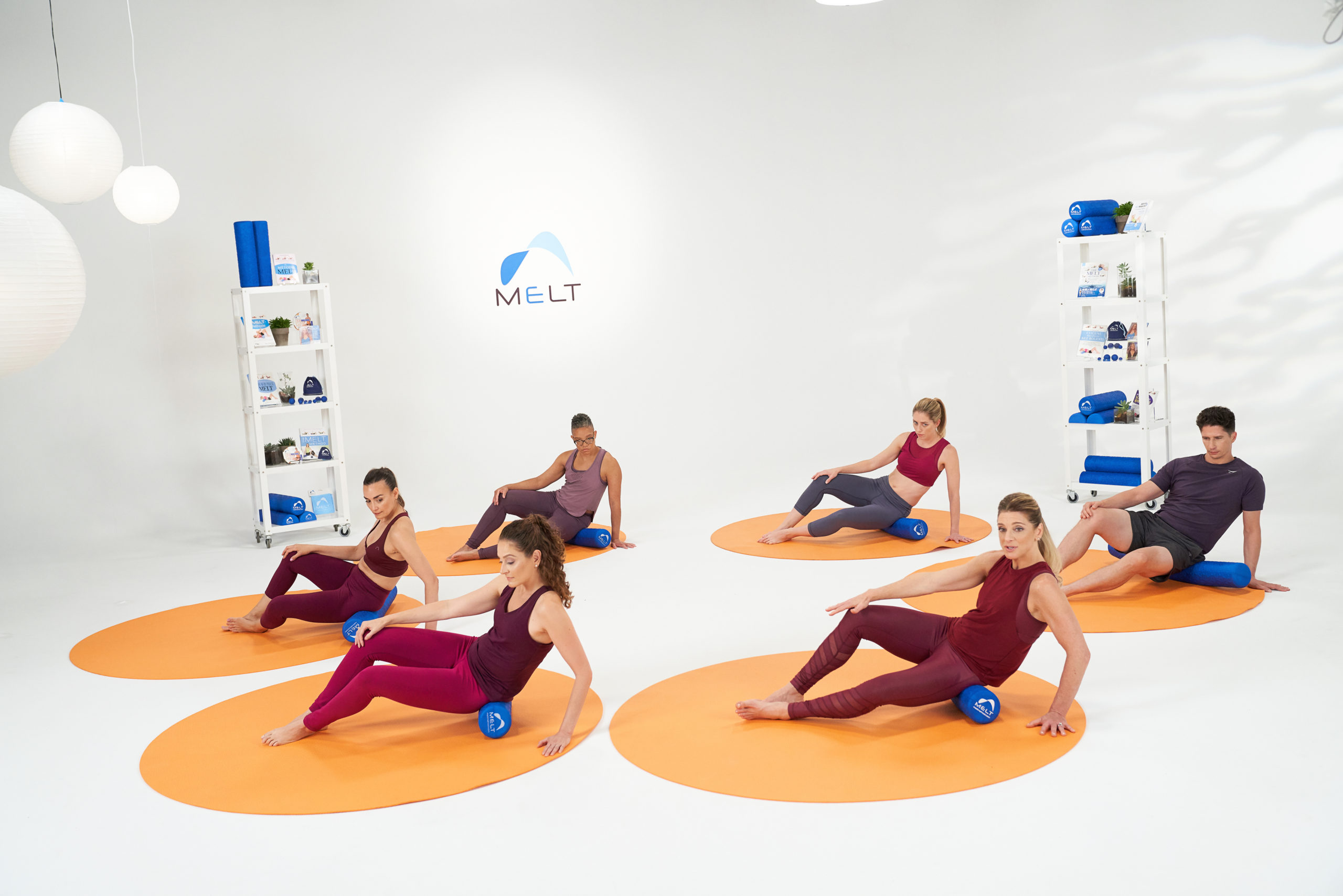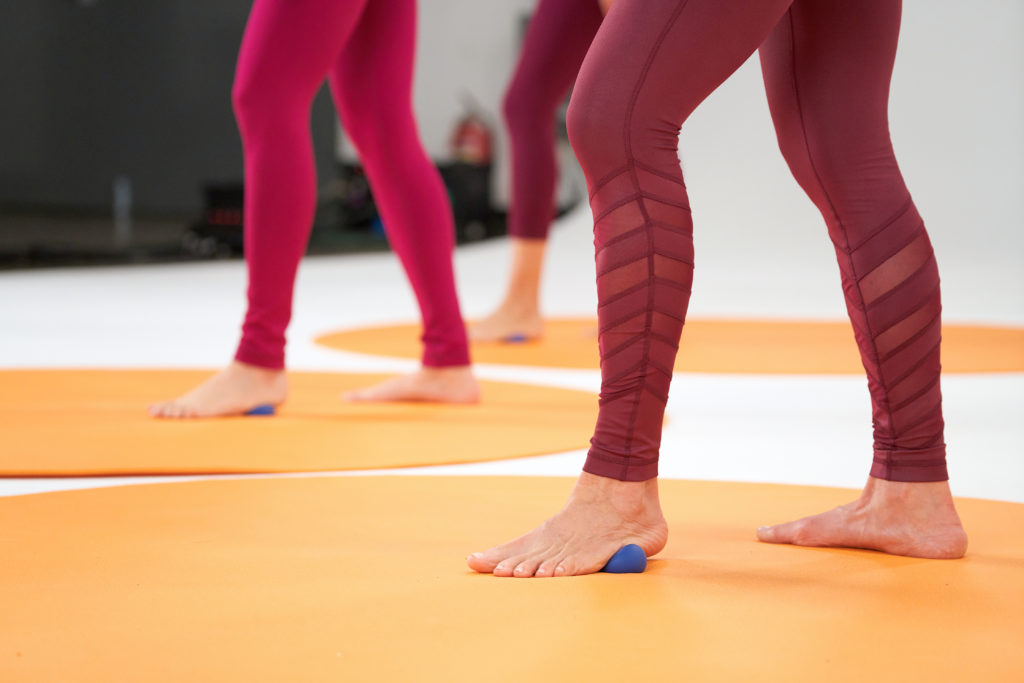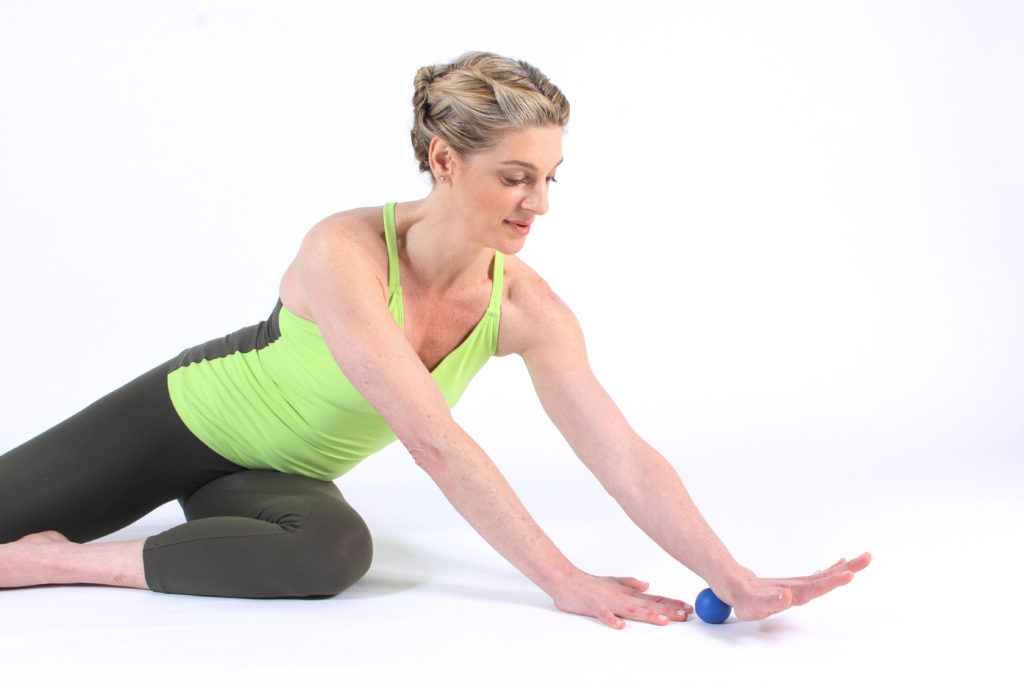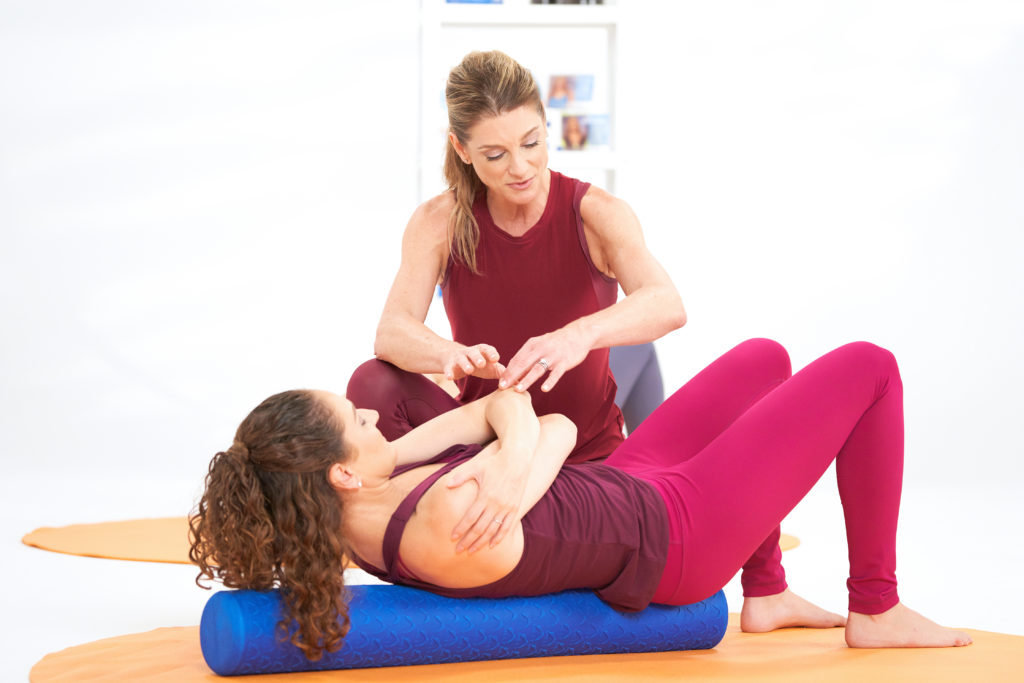
From dense lacrosse balls to cut sections of PVC pipes, dancers and dance teachers have a knack for finding creative tools to relieve their very specific muscle aches and pains. But when it comes to self-myofascial release (“rolling out”), more pressure and pain is not always the most effective or sustainable way to care for your body.
There’s a gentler, fascia-related bodywork technique that dance teachers might want to consider: MELT Method, which is short for “myofascial energetic lengthening technique.”
MELT is “a simple self-care method that incorporates everything from mindful meditation practice and breath work to self-rehydration techniques,” explains Sue Hitzmann, founder and chief creative officer of the MELT Method. Rather than kneading out your muscles on firm foam rollers, MELT utilizes soft balls and rollers made from compressible material.
Hitzmann spent decades working as a group fitness instructor, and she created MELT as a way to cope with her own chronic pain. Focusing on fascia—the connective tissue that surrounds all organs, muscles, bones and nerve fibers—was a game changer. MELT is designed to be a fascia-rehydration program, meaning it induces the fluid-flow exchange in your connective tissues. This helps muscle tissue stay healthy and supple, and can improve everything from your stability and mobility to your well-being and mood.

Dancer, choreographer and educator EmmaGrace Skove-Epes came to the modality while recovering from a severe back injury that put her on bed rest. After taking a few MELT classes at Gibney, she felt a direct impact from the practice and decided to become an instructor. “My body system was really responsive to it,” she recalls. “I felt deeply relaxed, as if I had just had bodywork in a way.”
Here are some of the ways MELT can address the unique physical challenges that dance teachers face and serve as a valuable injury-prevention resource for the dancers they instruct.
Using MELT as a Self-Care Tool
Dance teachers often don’t get the luxury of being able to take class while they teach, says Marisa Merliss, a MELT instructor in New York City. For example, you might demonstrate a combination, then sit down to observe the class, only to have to get back up and move again.
“You’re stopping and starting so much, which makes you more prone to getting cold, stiff and just more vulnerable to pain, strain and injury—even if you’re not injured,” Merliss says. It’s easy to fall into a pattern of putting strains and demands on your body and not giving yourself time to adequately recover. A regular MELT practice can help bridge that gap and drastically reduce the recovery time between classes, workouts and rehearsals, she says.
On top of not having the time or bandwidth to devote to recovery, dance teachers and movement instructors are typically so focused on what the class is doing that they don’t have time to check in on themselves, Hitzmann says. “It can be kind of a hazard for the practitioner,” she says.

Even making a short MELT session part of your daily routine can lead to noticeable results. Skove-Epes, for instance, spends a few minutes rolling out her hands and feet with MELT balls every day. “Those are the most introductory techniques, but because so many lines of connective tissue end in the hands and feet, it can have a body-wide impact,” she says.
The Mind–Body Benefits of MELT
“Beyond the physical sensations, like decreased muscle soreness and improved flexibility, practicing MELT can have a powerful effect on your spatial awareness, agility, and sense of stability and control,” Hitzmann says. For example, the foot exercises in MELT Method involve using therapy balls of different sizes and densities to stimulate the feet, and can allow you to really feel your relationship to the floor, she says.
In many ways, MELT is a mindfulness exercise: “We teach people a lot about becoming more aware of their body signals about these subconscious or autonomic aspects of our body, and being able to pick up those subtle body messages before we have pain,” Hitzmann says.
For Skove-Epes, MELT has enabled her to tap into “a more nuanced dimension in movement,” she says. “I have a more luscious experience of moving or a deeper sense of all of my options when I move. I can sense more minute directions in my body because of how certain MELT techniques increase my proprioception and interoception,” she says.

In the classes that Skove-Epes teaches, she aims to incorporate tenets of MELT Method so her students can experience the benefits. As part of the warm-up, she’ll have students place their hands on the different fascia lines of their bodies to start to visualize connections throughout their bodies. “People can then access that later when they’re doing more complex movements,” she says. “They’re able to understand how dynamic and integrated toe-to-head really is, as opposed to thinking in part by part.”
Investing in “Body Literacy”
With so many different bodywork modalities and pricey certifications to choose from (and keep up with) these days, it can be overwhelming to determine what’s worth your money and time as a teacher. For perspective, the cost of virtual MELT Level 1 instructor training is $2,295 and a MELT foam roller is $79.99.
Merliss, whose teaching roster has included everything from Pilates to musical theater, says it’s a major perk to be able to teach something that isn’t so taxing on your body. “If you’re doing MELT in a class or with your clients, it’s actually restorative while you’re teaching it, rather than wearing and tearing,” she says. And with on-demand streaming options online, Merliss says, it’s easy for dance teachers and students to keep up with their MELT practice outside of the studio.

When Skove-Epes was deciding what supplemental practices she could pursue to complement her dance classes, MELT stood out for its “body literacy and restorative” components, she says. “If I’m teaching, I am going to be passing on these patterns. So if I’m in pain after doing them, then at least one of my other students is probably going to be too,” she says. “What’s a set of tools that we can have to help ourselves get out of it?”





